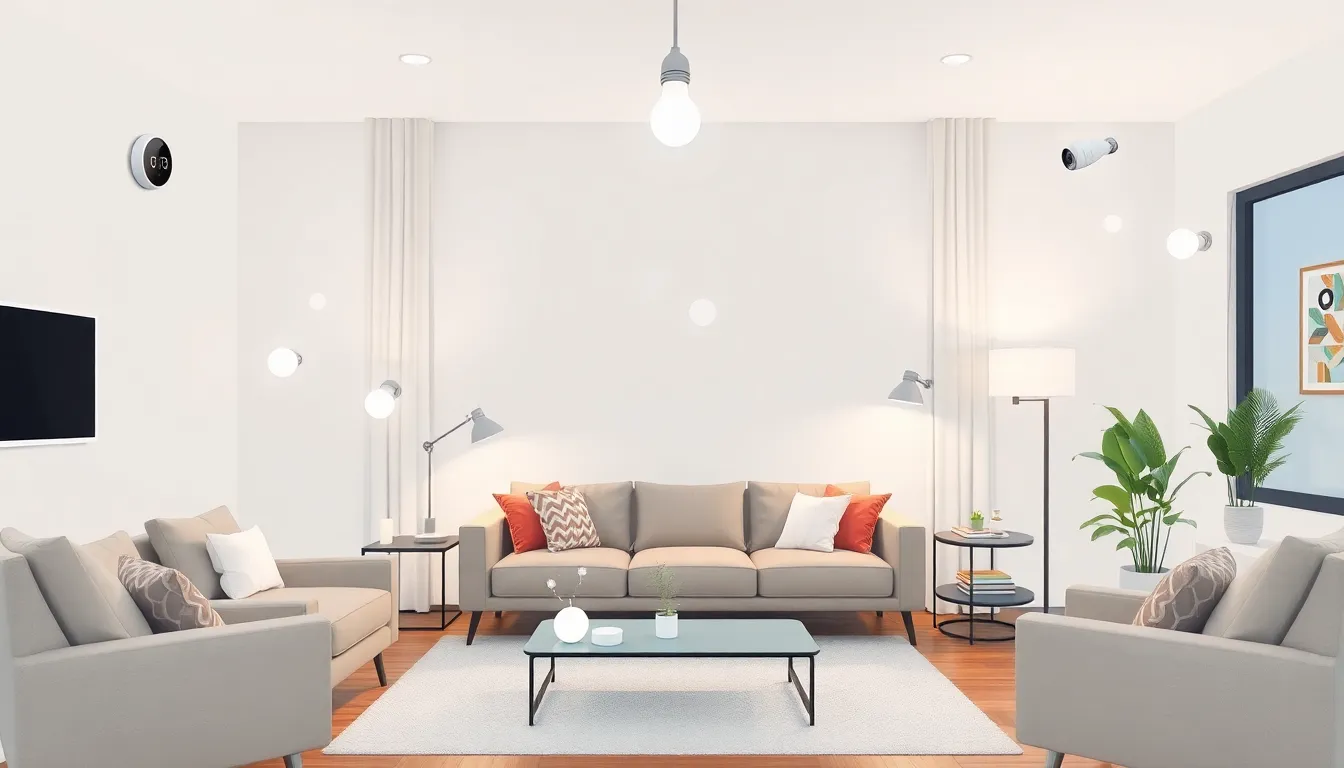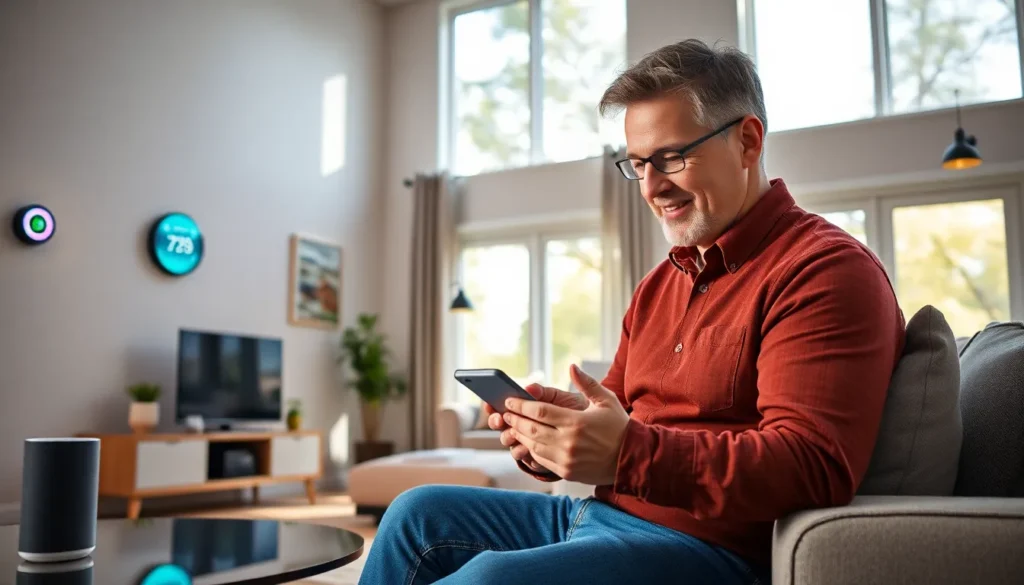Table of Contents
ToggleImagine walking into your home and having the lights turn on automatically, the thermostat adjust to your preferred temperature, and your favorite playlist start playing—all without lifting a finger. Welcome to the world of Zigbee home automation, where your house becomes smarter than your average pet.
Zigbee’s low-power, wireless technology connects various devices seamlessly, making your life easier and more efficient. It’s like having a personal assistant who doesn’t need coffee breaks or a salary. From smart bulbs to security systems, Zigbee offers a flexible and reliable solution for creating a fully connected home. So why settle for ordinary when you can turn your living space into a high-tech haven? Let’s dive into the benefits of Zigbee and how it can transform your home into a futuristic paradise.
What Is Zigbee Home Automation?
Zigbee home automation refers to a system where smart devices communicate wirelessly to enhance efficiency and convenience in daily life. This technology utilizes low-power consumption, making it ideal for a variety of household applications.
Overview of Zigbee Technology
Zigbee operates on the IEEE 802.15.4 standard, providing reliable and secure communication among devices. It supports mesh networking, allowing devices to relay information, improving range and connectivity. This technology excels in connecting multiple devices, reducing the need for extensive wiring and enabling easy installation. The 2.4 GHz frequency band utilized by Zigbee offers a robust platform for low-data-rate applications, making it suitable for smart home environments.
Key Features of Zigbee
Low power consumption distinguishes Zigbee from other wireless technologies, leading to longer battery life in connected devices. Scalability enables users to add numerous devices without degrading performance. Interoperability allows devices from various manufacturers to work seamlessly within the Zigbee network. Security features include built-in encryption and authentication, ensuring data protection and user privacy. With a range of up to 100 meters indoors, Zigbee effectively covers the average home, facilitating comprehensive automation solutions.
Benefits of Zigbee Home Automation

Zigbee home automation offers numerous advantages that enhance daily living. Key benefits include energy efficiency and enhanced security.
Energy Efficiency
Zigbee technology significantly reduces energy consumption through low-power operations in connected devices. Devices remain powered longer, leading to fewer battery replacements and lower replacement costs. Automating lighting and heating can lead to substantial energy savings, as systems only operate when necessary. Homeowners can schedule devices to power on or off based on usage patterns. Additionally, smart devices often feature energy monitoring, allowing users to track real-time energy consumption and identify unnecessary usage.
Enhanced Security
Zigbee provides robust security measures, ensuring all connected devices communicate securely. Encrypted communication prevents unauthorized access, safeguarding sensitive data. Home automation systems can integrate with security cameras and sensors, enhancing overall protection. Alerts can notify homeowners of unusual activity or breaches. Remote access allows monitoring of home security from anywhere, providing peace of mind. Comprehensive security features make Zigbee a reliable choice for those seeking advanced safety solutions.
Setting Up Zigbee Home Automation
Setting up Zigbee home automation involves selecting essential devices and following a straightforward installation process.
Required Devices and Components
Key components include a Zigbee hub, smart devices, and optional sensors. A Zigbee hub serves as the central controller, connecting various devices like lights, thermostats, and locks. Smart devices require Zigbee compatibility for seamless communication. Light bulbs and plugs enhance automation by enabling remote control. Sensors, such as motion detectors and door/window sensors, provide additional security. Choosing devices from different manufacturers is possible due to Zigbee’s interoperability, ensuring flexibility in creating a customized smart home environment.
Installation Process
The installation process starts with placing the Zigbee hub in a central location for optimal range. Connecting the hub to the home Wi-Fi network establishes internet access for remote control. Next, users add smart devices one at a time, following the manufacturer’s instructions. During setup, each device connects to the hub through the Zigbee app, which aids in device management. After adding, users can organize devices into groups for efficient control. Finally, configuring automation routines allows for personalized commands, such as scheduling lights to turn off at specific times.
Popular Zigbee Home Automation Devices
Several devices enhance the Zigbee home automation experience. Notable categories include smart lights and smart door locks, each offering unique benefits.
Smart Lights
Smart lights play a crucial role in Zigbee home automation. They allow users to control lighting remotely or set schedules. Many options include features like color changing and dimming capabilities. These lights connect seamlessly to Zigbee hubs, ensuring compatibility and ease of use. Brands like Philips Hue and Sengled provide reliable products. Smart lights also contribute to energy savings by enabling users to turn off lights remotely, reducing wasted electricity. Homeowners often appreciate the convenience of integrating these lights into automation routines, such as creating ambiance for movie nights or gradually brightening in the morning.
Smart Door Locks
Smart door locks improve home security through advanced technology. These locks allow keyless entry, enabling users to unlock doors via smartphones or codes. Brands like Yale and August offer Zigbee-compatible options. Users can grant temporary access to guests or service providers without needing physical keys. Notifications alert homeowners about lock status and activity, enhancing security monitoring. Zigbee smart locks work well with existing home security systems, creating a comprehensive safety net. Integration with other smart devices like cameras further enhances security, providing real-time monitoring and ease of access.
Zigbee home automation stands out as a powerful solution for creating a smart and efficient living space. Its low-power technology and secure communication make it an ideal choice for homeowners looking to enhance convenience and safety. With a wide range of compatible devices and straightforward setup, Zigbee simplifies the process of integrating smart technology into daily life.
As users embrace the benefits of energy efficiency and robust security features, the potential for personalized automation grows. By exploring Zigbee’s capabilities, homeowners can transform their environments into smart homes that cater to their unique needs and lifestyles. The future of home automation is here, and Zigbee is leading the way.




